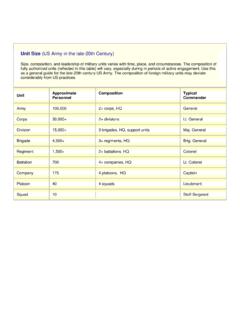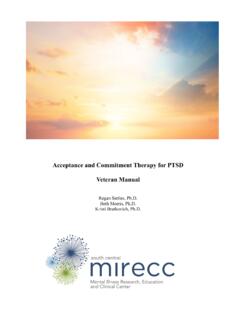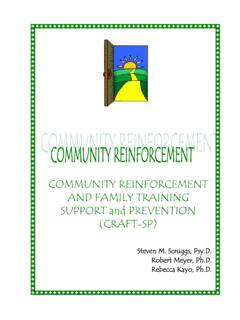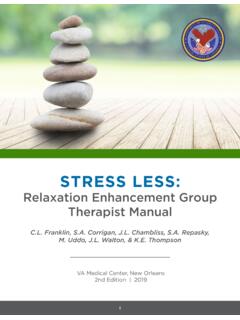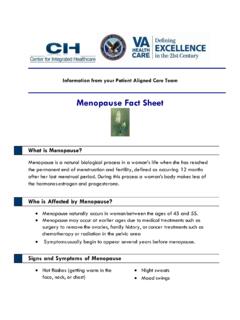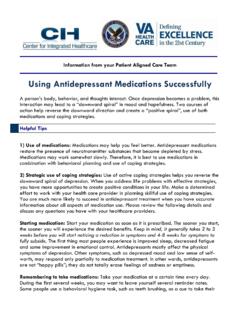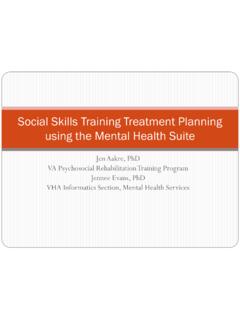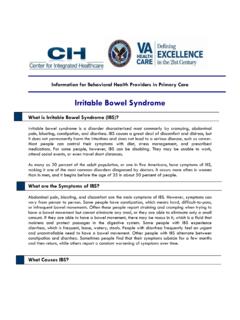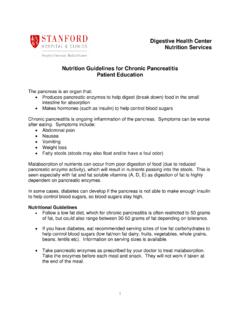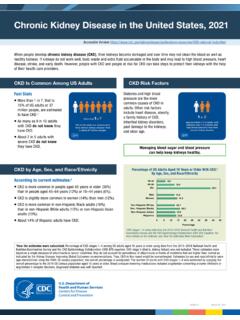Transcription of COPD Chronic Obstructive Pulmonary Disease
1 Information from your Patient Aligned Care Team COPD Chronic Obstructive Pulmonary Disease What is COPD? COPD, or Chronic Obstructive Pulmonary (PULL-mun-ary) Disease , is a progressive Disease that makes it hard to breathe. "Progressive" means the Disease gets worse over time. COPD can cause coughing that produces large amounts of mucus (a slimy substance), wheezing, shortness of breath, chest tightness, and other symptoms. Cigarette smoking is the leading cause of COPD. Most people who have COPD smoke or used to smoke. Long-term exposure to other lung irritants, such as air pollution, chemical fumes, or dust, also may contribute to COPD. Overview of COPD. To understand COPD, it helps to understand how the lungs work. The air that you breathe goes down your windpipe into tubes in your lungs called bronchial tubes or airways. The airways are shaped like an upside-down tree with many branches. At the end of the branches are tiny air sacs called alveoli (al-VEE-uhl-eye).
2 Small blood vessels called capillaries run through the walls of the air sacs. When air reaches the air sacs, the oxygen in the air passes through the air sac walls into the blood in the capillaries. At the same time, carbon dioxide (a waste gas) moves from the capillaries into the air sacs. This process is called gas exchange. The airways and air sacs are elastic (stretchy). When you breathe in, each air sac fills up with air like a small balloon. When you breathe out, the air sacs deflate and the air goes out. In COPD, less air flows in and out of the airways because of one or more of the following: The airways and air sacs lose their elastic quality. The walls between many of the air sacs are destroyed. The walls of the airways become thick and inflamed. The airways make more mucus than usual, which tends to clog them. COPD (continued). Healthy Air Sacs and Damaged Air Sacs The illustration on the right shows the airways and lungs and images of healthy air sacs and air sacs damaged by COPD.
3 In the United States, the term "COPD" includes two main conditions emphysema (em-fi-SE- ma) and Chronic bronchitis (bron-KI-tis). (Note: In emphysema, the walls between many of the air sacs are damaged, causing them to lose their shape and become floppy. This damage also can destroy the walls of the air sacs, leading to fewer and larger air sacs instead of many tiny ones. If this happens, the amount of gas exchange in the lungs is reduced. In Chronic bronchitis, the lining of the airways is constantly irritated and inflamed. This causes the lining to thicken. Lots of thick mucus forms in the airways, making it hard to breathe. Most people who have COPD have both emphysema and Chronic Obstructive bronchitis. Thus, the general term "COPD" is more accurate. What Causes COPD? Most cases of COPD occur as a result of long-term exposure to lung irritants that damage the lungs and the airways. In the United States, the most common irritant that causes COPD.)
4 Is cigarette smoke. Pipe, cigar, and other types of tobacco smoke also can cause COPD, especially if the smoke is inhaled. Breathing in secondhand smoke, air pollution, and chemical fumes or dust from the environment or workplace also can contribute to COPD. (Secondhand smoke is smoke in the air from other people smoking.). In rare cases, a genetic condition called alpha-1 antitrypsin deficiency may play a role in causing COPD. People who have this condition have low levels of alpha-1 antitrypsin (AAT) a protein made in the liver. Having a low level of the AAT protein can lead to lung damage and COPD if you're exposed to smoke or other lung irritants. If you have this condition and smoke, COPD can worsen very quickly. What are the Signs and Symptoms of COPD? COPD July 2013 Page 2. COPD (continued). The signs and symptoms of COPD include: An ongoing cough or a cough that produces large amounts of mucus (often called "smoker's cough").
5 Shortness of breath, especially with physical activity Wheezing (a whistling or squeaky sound when you breathe). Chest tightness These symptoms often occur years before the flow of air into and out of the lungs declines. However, not everyone who has these symptoms has COPD. Likewise, not everyone who has COPD has these symptoms. Some of the symptoms of COPD are similar to the symptoms of other diseases and conditions. Your doctor can find out whether you have COPD. If you have COPD, you may have colds or the flu (influenza) frequently. If your COPD is severe, you may have swelling in your ankles, feet, or legs; a bluish color on your lips due to a low blood oxygen level; and shortness of breath. COPD symptoms usually slowly worsen over time. At first, if symptoms are mild, you may not notice them, or you may adjust your lifestyle to make breathing easier. For example, you may take the elevator instead of the stairs.
6 Over time, symptoms may become severe enough to see a doctor. For example, you may get short of breath during physical exertion. How severe your symptoms are depends on how much lung damage you have. If you keep smoking, the damage will occur faster than if you stop smoking. In severe COPD, you may have other symptoms, such as weight loss and lower muscle endurance. Some severe symptoms may require treatment in a hospital. You with the help of family members or friends, if you're unable should seek emergency care if: You're having a hard time catching your breath or talking. Your lips or fingernails turn blue or gray. (This is a sign of a low oxygen level in your blood.). You're not mentally alert. Your heartbeat is very fast. The recommended treatment for symptoms that are getting worse isn't working. How is COPD Treated? COPD July 2013 Page 3. COPD (continued). COPD has no cure yet. However, treatments and lifestyle changes can help you feel better, stay more active, and slow the progress of the Disease .
7 Quitting smoking is the most important step you can take to treat COPD. Talk with your doctor about programs and products that can help you quit. The VA has programs that help people quit smoking and your primary care team can help refer you to a program. Ask your family members and friends to support you in your efforts to quit. Also, try to avoid secondhand smoke. (Secondhand smoke is smoke in the air from other people smoking.). Other treatments for COPD may include medicines, vaccines, Pulmonary rehabilitation (rehab), oxygen therapy, and surgery. Your doctor also may recommend tips for managing COPD complications. The goals of COPD treatment include: Relieving your symptoms Slowing the progress of the Disease Improving your exercise tolerance (your ability to stay active). Preventing and treating complications Improving your overall health Specialists Involved To assist with your treatment, your primary care provider may advise you to see a pulmonologist.
8 This is a doctor who specializes in treating people who have lung disorders. Medicines Bronchodilators Bronchodilators relax the muscles around your airways. This helps open your airways and makes breathing easier. Depending on how severe your Disease is, your doctor may prescribe short-acting or long-acting bronchodilators. Short-acting bronchodilators last about 4 to 6 hours and should be used only when needed. Long-acting bronchodilators last about 12 hours or more and are used every day. Most bronchodilators are taken using a device called an inhaler. This device allows the medicine to go right to your lungs. Not all inhalers are used the same way. Ask your health care team to show you the correct way to use your inhaler. If your COPD is mild, your doctor may only prescribe a short-acting inhaled bronchodilator. In this case, you may only use the medicine when symptoms occur. COPD July 2013 Page 4. COPD (continued).
9 If your COPD is moderate or severe, your doctor may prescribe regular treatment with short- and long-acting bronchodilators. Inhaled Glucocorticosteroids (Steroids). Inhaled steroids are used to treat people whose COPD symptoms flare up or worsen. These medicines may reduce airway inflammation . Your doctor may ask you to try inhaled steroids for a trial period of 6 weeks to 3 months to see whether the medicine helps relieve your breathing problems. Vaccines Flu Shots The flu (influenza) can cause serious problems for people who have COPD. Flu shots can reduce your risk of the flu. Talk with your doctor about getting a yearly flu shot. Pneumococcal Vaccine This vaccine lowers your risk of pneumococcal pneumonia (nu-MO-ne-ah) and its complications. People who have COPD are at higher risk of pneumonia than people who don't have COPD. Talk with your doctor about whether you should get this vaccine. Pulmonary Rehabilitation Pulmonary rehabilitation, or rehab, is a medically supervised program that helps improve the health and well-being of people who have lung problems.
10 Rehab may include an exercise program, Disease management training, and nutritional and psychological counseling. The program's goal is to help you stay more active and carry out your daily activities. Your rehab team may include doctors, nurses, physical therapists, respiratory therapists, exercise specialists, and dietitians. These health professionals work together and with you to create a program that meets your needs. Oxygen Therapy If you have severe COPD and low levels of oxygen in your blood, oxygen therapy can help you breathe better. For this treatment, you're given oxygen through nasal prongs or a mask. You may need extra oxygen all the time or just sometimes. For some people who have severe COPD, using extra oxygen for most of the day can help them: COPD July 2013 Page 5. COPD (continued). Do tasks or activities, while having fewer symptoms Protect their hearts and other organs from damage Sleep more during the night and improve alertness during the day Live longer Living with COPD.
